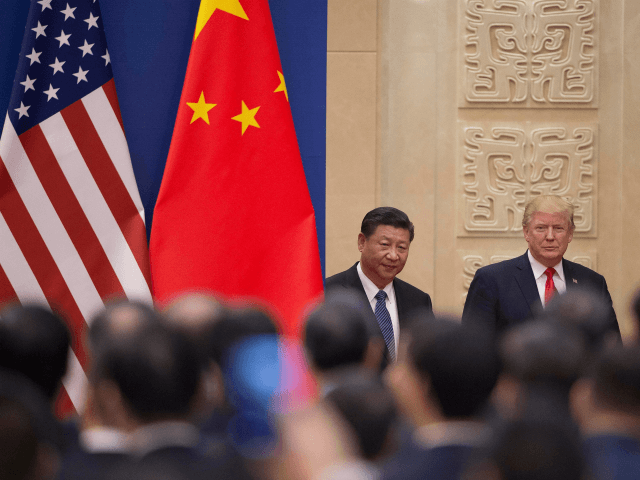President Donald Trump famously said, “Trade wars are good, and easy to win.” The early results of the last few weeks of negotiations with China suggest that may have been overly optimistic.
The early results of the last few weeks of negotiations with China suggest that may have been overly optimistic.
The logic was right. The United States runs huge and seemingly perpetual trade deficits with many of its largest trading partners. The U.S. is a necessary market for many of the world’s largest companies. This should give the U.S. bargaining power in negotiating more favorable trade agreements.
But just as in conventional war, winning a trade war requires leadership to marshal a national consensus to support the effort, resolve to withstand counter-attacks, and an ability to outwit one’s rivals.
At least in the early stages of the trade dispute with China, the Trump administration does not appear to be winning. The U.S. has agreed to push the pause button on threatened tariffs on China’s exports, while China has given up very little except vague promises to buy more U.S. goods and lift some tariff barriers on U.S. auto parts.
China shows no signs of relaxing its national plans to dominate high tech manufacturing by hook or by crook. China’s famous “Made in China 2025” and “China 2050” programs involve reducing its dependence on foreign imports and growing its domestic manufacturing sector, putting it squarely at odds with the Trump administration’s trade goals.
Even if it imports more U.S. soy, sorghum, natural gas, and shale oil, it will not come close to cutting its trade surplus with the U.S. by the $200 billion President Trump has said is his goal. In any case, China may be all too happy to allow the U.S. to become a supplier of energy and food, a sort of commodity-supplying colony to the Chinese manufacturing giant.
The recent ZTE debacle, with the U.S. threatening, then withdrawing, a devastating penalty on the Chinese company, has likely only redoubled the Chinese resolve to free its manufacturers from dependence on U.S.-made software and hardware.
A lot of what China appears to be agreeing to was probably inevitable. As China grows its urban population and manufacturing sector, its demand for agricultural imports will expand, the same with its demand for liquified natural gas, of which the U.S. is one of the top exporters in the world.
U.S. officials appear to be flummoxed by the differences in the U.S. and Chinese economic systems. During the weekend, both Treasury Secretary Steven Mnuchin and White House chief economic adviser Larry Kudlow insisted that although the two countries could agree to a broad framework to reduce trade barriers and increase U.S. exports to China, the details would have to be worked out between private companies in both countries. This is a Chinese talking point that vastly understates the control the Chinese government and the Communist Party have over Chinese businesses.
It is still early days in the trade negotiations. Complaints that President Trump’s plans lack details go back at least to the campaign when critics charged that his tax plan was unrealistic and lacked specificity. That tax plan was largely enacted in December and is now law.
U.S. negotiators may still win serious trade accommodations from China. Even though U.S. trade hawks are suspicious of talks led by free-traders such as Mnuchin and worried about the apparent move to exclude White House trade adviser Peter Navarro, many of those participating in the negotiations are committed to winning better terms of trade for the U.S. No one would mistake U.S. Trade representative Robert Lighthizer for being soft on trade.
Perhaps most importantly, the president himself is committed to winning the trade dispute. His views on trade go back decades, and his insistence that he has the skillset and experience to forge better trade deals for the U.S. formed a major part of his political appeal.
No doubt, the world is watching. Mexico and Canada will see any sign of flagging resolve on China as a signal that the U.S. might be convinced to back off its Nafta demands. Europe and Japan will also take their cues from the China negotiations.
Given the size and scope of its trade imbalance with the U..S., China should have been the easiest trade win for the Trump administration. So far, however, it is proving a far more difficult knot for the U.S. negotiators to untangle.
As the Wall Street Journal‘s Greg Ip wrote,”China still holds the weaker hand in this trade dispute—but it has played that hand far better.”

COMMENTS
Please let us know if you're having issues with commenting.